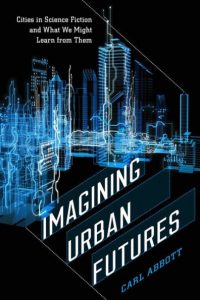There is much imagination about what the cities will look like in the future. Different science fiction authors give their projections. In Migratory Cities, Abbot offers several types of cities that can move, depicted in popular fictions, as examples. The form of these cities is generally called Walker city or Okie city. Under normal circumstances, a municipality is a permanent place where has a physical boundary which distinguishes it from others, a geographical concept. However, there are walker cities which are different from the norm and break the traditional definition. As Abbot mentions, the shared reason is often the enormous change in the natural causes disasters forcing people to move from their original homes. “This was walker city, a city on the move. To walk was the world. To walk was life.” (Baxter, as cited in Abbot, 2016) People who live in a certain city, immigrate from place to place, together with the city. Though there is not a fixed location, the core part of it never changes. Citizens make their livings as before, and civilization is well preserved. It expresses a kind of hope in human beings and the assumption of the future. At the same time, it also rings the alarm bells getting people to pay more attention towards nature and reflect the relationship between ourselves and the Earth.
 Reference:
Reference:
Abbott, C. (2016). Migratory Cities. In Imagining Urban Futures: Cities in Science Fiction and What We Might Learn From Them. CN: Wesleyan University Press.
ZHANG Qinya 3035639185 Fri1100
A thoughful reflection on ABBOT’s text. Do you think that a mobile city might be our ultimate solution in dealing with environmental hazards caused by humans?